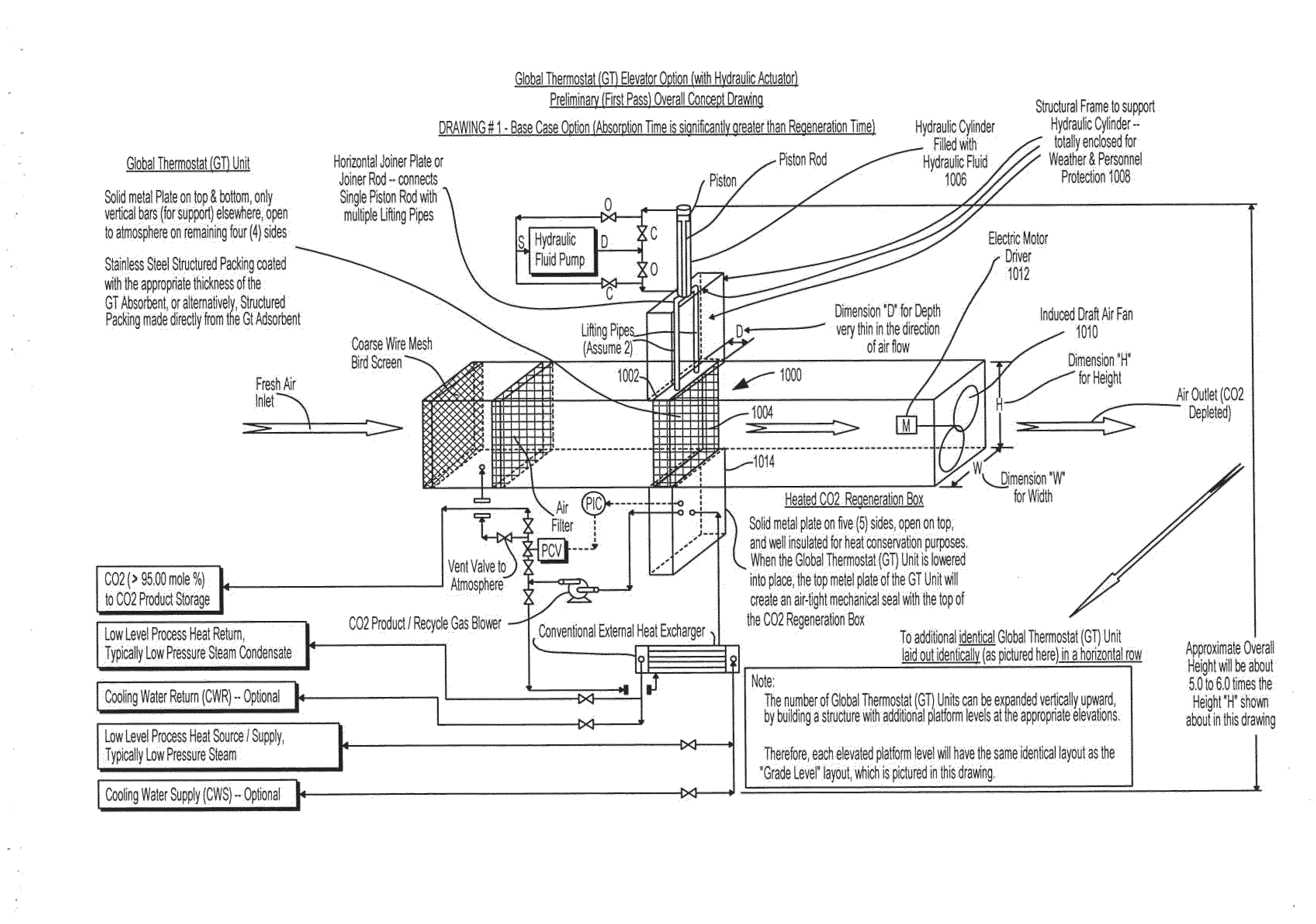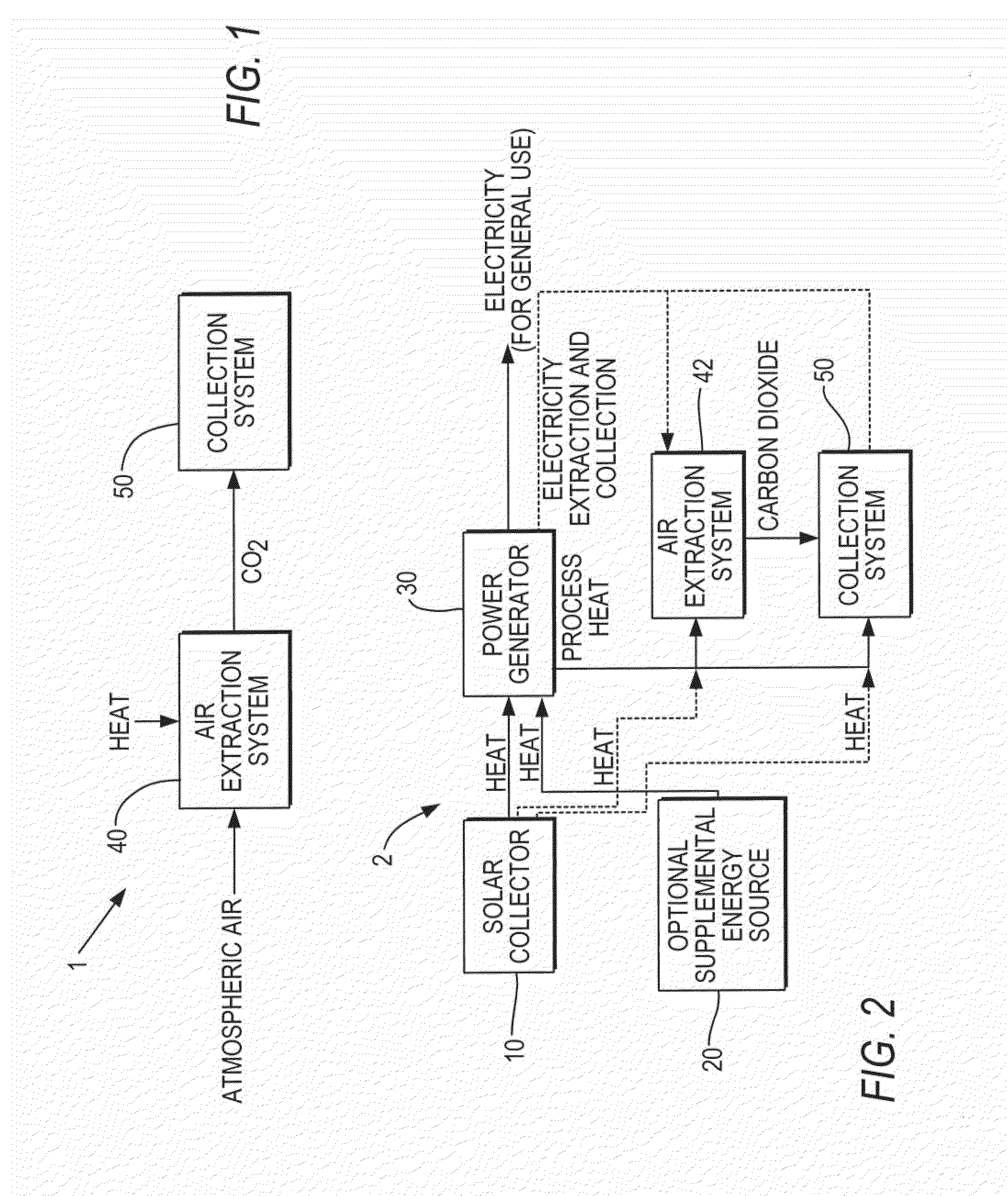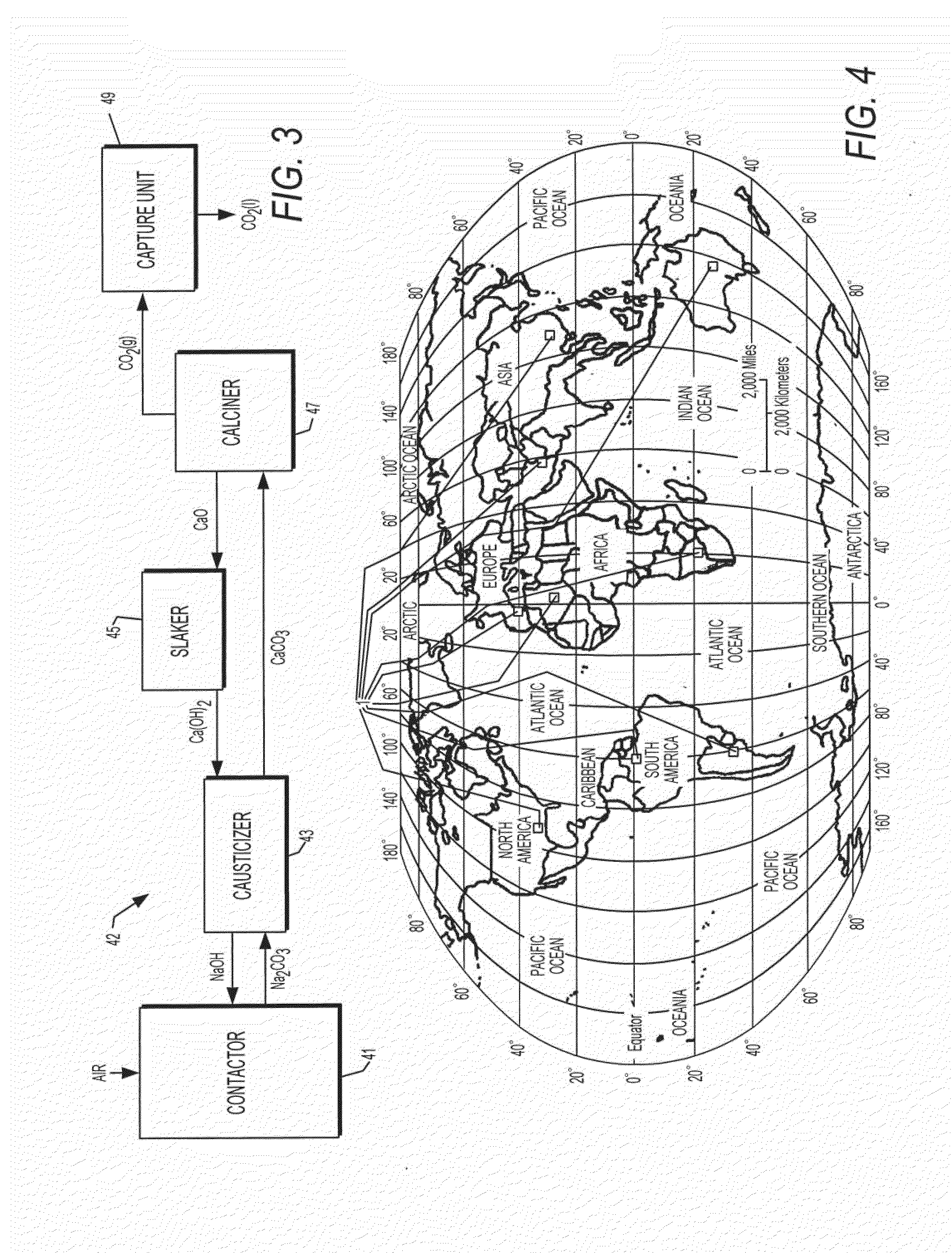Carbon Dioxide Capture/Regeneration Structures and Techniques
a carbon dioxide and structure technology, applied in the field of carbon dioxide capture/regeneration structures and techniques, can solve the problems of generating negative carbon, 300/b> times more expensive, and using ambient air as opposed to flue gas
- Summary
- Abstract
- Description
- Claims
- Application Information
AI Technical Summary
Benefits of technology
Problems solved by technology
Method used
Image
Examples
Embodiment Construction
Background Description of the System and Method Concepts of application Ser. No. 12 / 124,864
[0036]Initially, it is believed useful to describe the method and system of U.S. application Ser. No. 12 / 124,864, to provide background for the additional ways the present invention further develops those principles. FIGS. 1-9 illustrate the system and method of application Ser. No. 12 / 124,864. FIG. 1 is a generalized block diagram of a system, generally designated by reference number 1, for removing carbon dioxide from an atmosphere according to an exemplary embodiment of the present invention. The system 1 includes an air extraction system 40 and a collection system 50 that isolates the removed carbon dioxide to a location for at least one of sequestration, storage and generation of a renewable carbon fuel or the generation of a non-fuel product such as fertilizer and construction materials (or to be used in green houses or to enhance the rate of microbial production of biofuels). The air ex...
PUM
| Property | Measurement | Unit |
|---|---|---|
| mass | aaaaa | aaaaa |
| concentration | aaaaa | aaaaa |
| energy | aaaaa | aaaaa |
Abstract
Description
Claims
Application Information
 Login to View More
Login to View More - R&D
- Intellectual Property
- Life Sciences
- Materials
- Tech Scout
- Unparalleled Data Quality
- Higher Quality Content
- 60% Fewer Hallucinations
Browse by: Latest US Patents, China's latest patents, Technical Efficacy Thesaurus, Application Domain, Technology Topic, Popular Technical Reports.
© 2025 PatSnap. All rights reserved.Legal|Privacy policy|Modern Slavery Act Transparency Statement|Sitemap|About US| Contact US: help@patsnap.com



